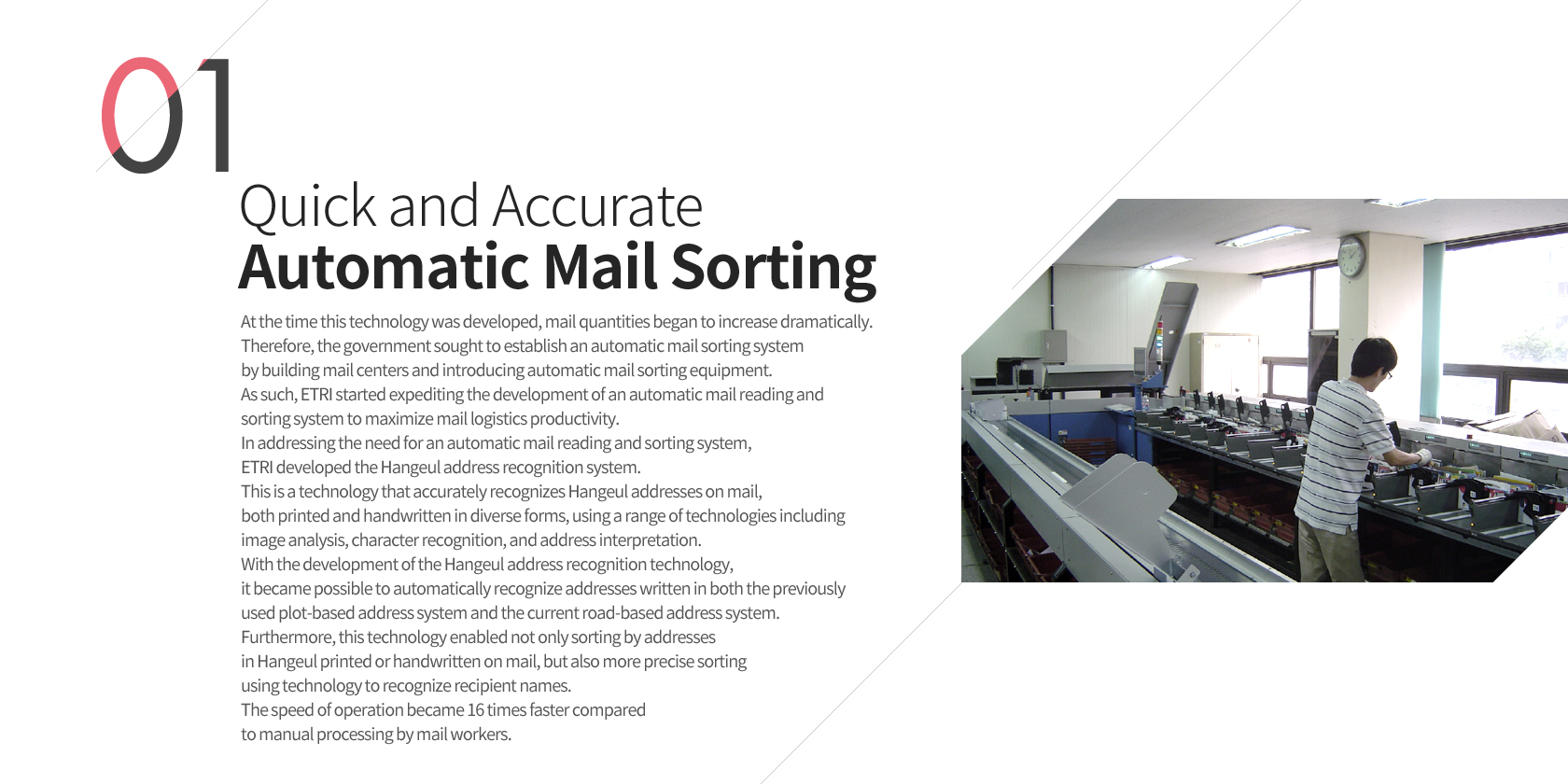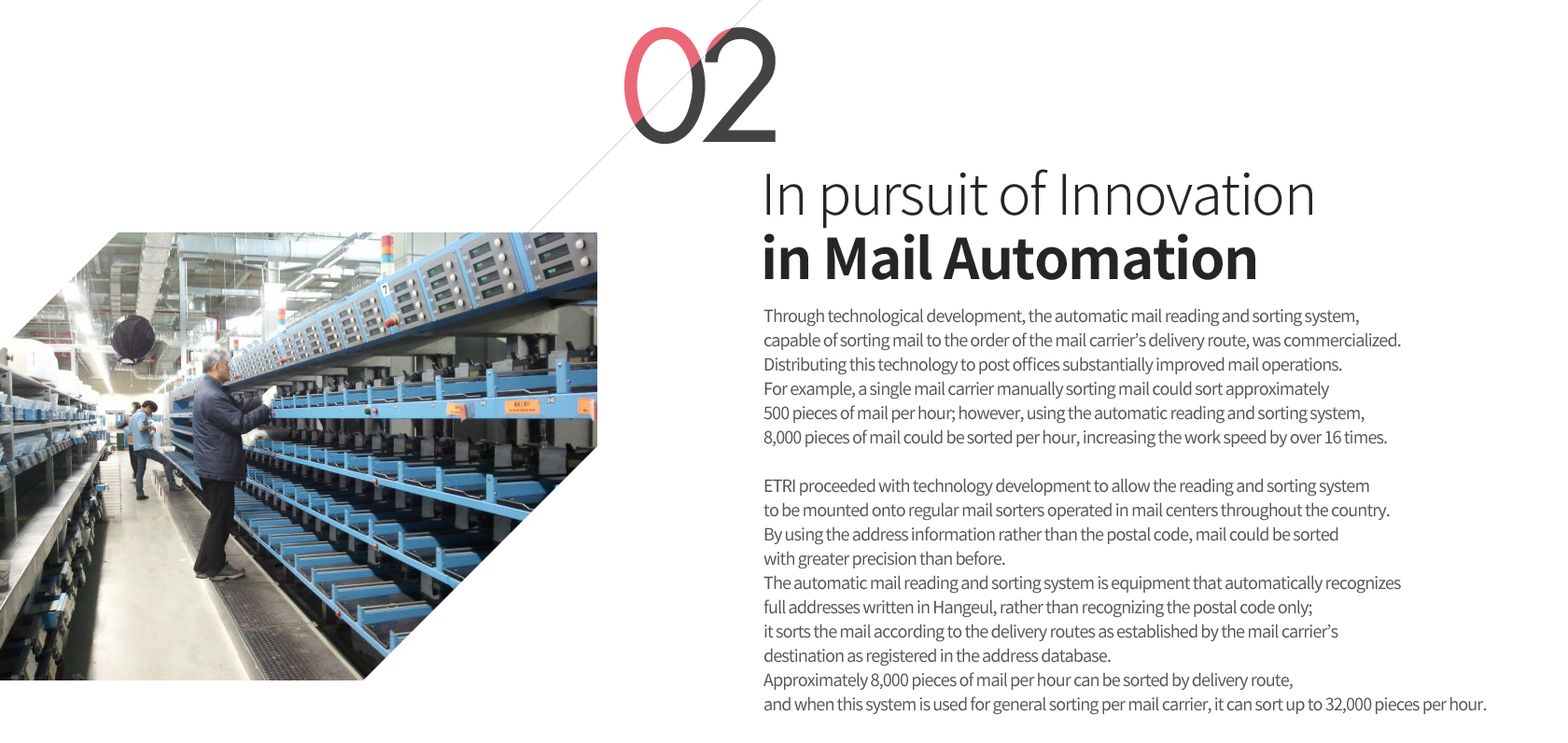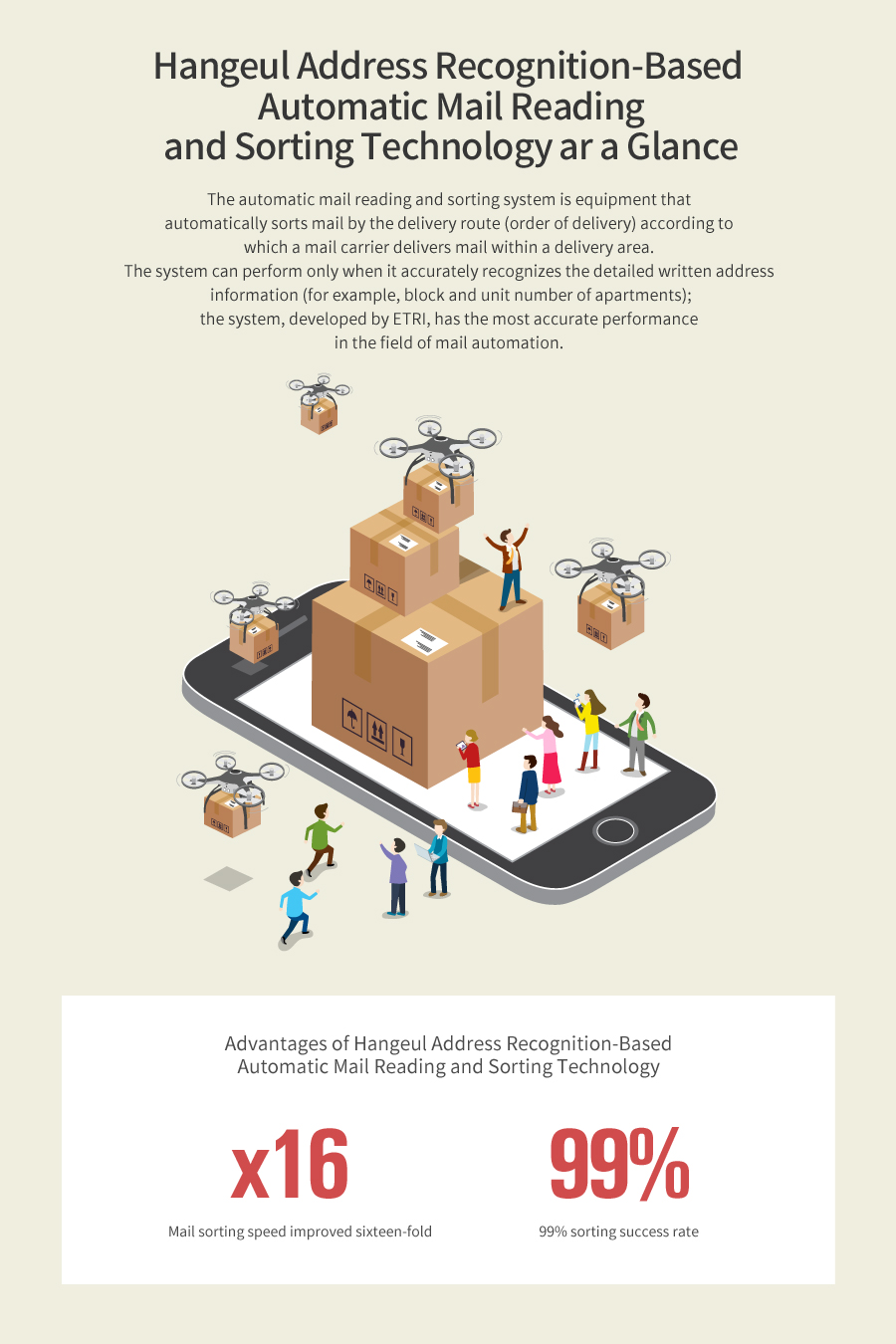





Automation
of Mail Operations –
Sorting Mail Quickly
and Accurately
Before an automatic mail reading and sorting system was developed, mailmen had to manually sort the mail for their delivery routes. With about 1,500 to 2,000 mail items to deliver per day per person, sorting and ordering normally took approximately two hours. However, with the commercialization of ETRI’s automatic reading and sorting system, up to 8,000 mail items can be processed per hour. Hangeul address recognition technology was applied to this system and, with its implementation in post offices, it contributed to accelerating mail automation.
01
Quick and Accurate
Automatic Mail Sorting
At the time this technology was developed, mail quantities began to increase dramatically. Therefore, the government sought to establish an automatic mail sorting system by building mail centers and introducing automatic mail sorting equipment. As such, ETRI started expediting the development of an automatic mail reading and sorting system to maximize mail logistics productivity.
In addressing the need for an automatic mail reading and sorting system, ETRI developed the Hangeul address recognition system. This is a technology that accurately recognizes Hangeul addresses on mail, both printed and handwritten in diverse forms, using a range of technologies including image analysis, character recognition, and address interpretation.
With the development of the Hangeul address recognition technology, it became possible to automatically recognize addresses written in both the previously used plot-based address system and the current road-based address system. Furthermore, this technology enabled not only sorting by addresses in Hangeul printed or handwritten on mail, but also more precise sorting using technology to recognize recipient names. The speed of operation became 16 times faster compared to manual processing by mail workers.

02
In pursuit of Innovation
in Mail Automation
Through technological development, the automatic mail reading and sorting system, capable of sorting mail to the order of the mail carrier’s delivery route, was commercialized. Distributing this technology to post offices substantially improved mail operations. For example, a single mail carrier manually sorting mail could sort approximately 500 pieces of mail per hour; however, using the automatic reading and sorting system, 8,000 pieces of mail could be sorted per hour, increasing the work speed by over 16 times.
ETRI proceeded with technology development to allow the reading and sorting system to be mounted onto regular mail sorters operated in mail centers throughout the country. By using the address information rather than the postal code, mail could be sorted with greater precision than before. The automatic mail reading and sorting system is equipment that automatically recognizes full addresses written in Hangeul, rather than recognizing the postal code only; it sorts the mail according to the delivery routes as established by the mail carrier’s destination as registered in the address database. Approximately 8,000 pieces of mail per hour can be sorted by delivery route, and when this system is used for general sorting per mail carrier, it can sort up to 32,000 pieces per hour. Introduction of the mail reading and sorting system automated the delivery point-based sorting operations carried out by post offices, which used to rely on manual sorting. This reduced sorting time by an average of two hours for each mail courier, enabling them to provide faster mail services. Until then, automatic sorting of mail was based only on postal codes written clearly and precisely in a fixed position, with no other symbols, numbers or characters recorded around the postal code, all the way to courier assignment, and relied mostly on imported equipment.
This technology’s utility for processing diverse images was verified in the actual field rather than on the drawing board only, and it has been possible to apply it broadly in other related industries that required character recognition technology, such as electronic conversion of documents and image processing in robotics. Successful commercialization of the automatic mail reading and sorting system, based purely on domestic technology, became another starting point for providing high-quality mail services to people through process innovation; it further greatly contributed to invigorating and developing the mail automation industry and technology of Korea.










